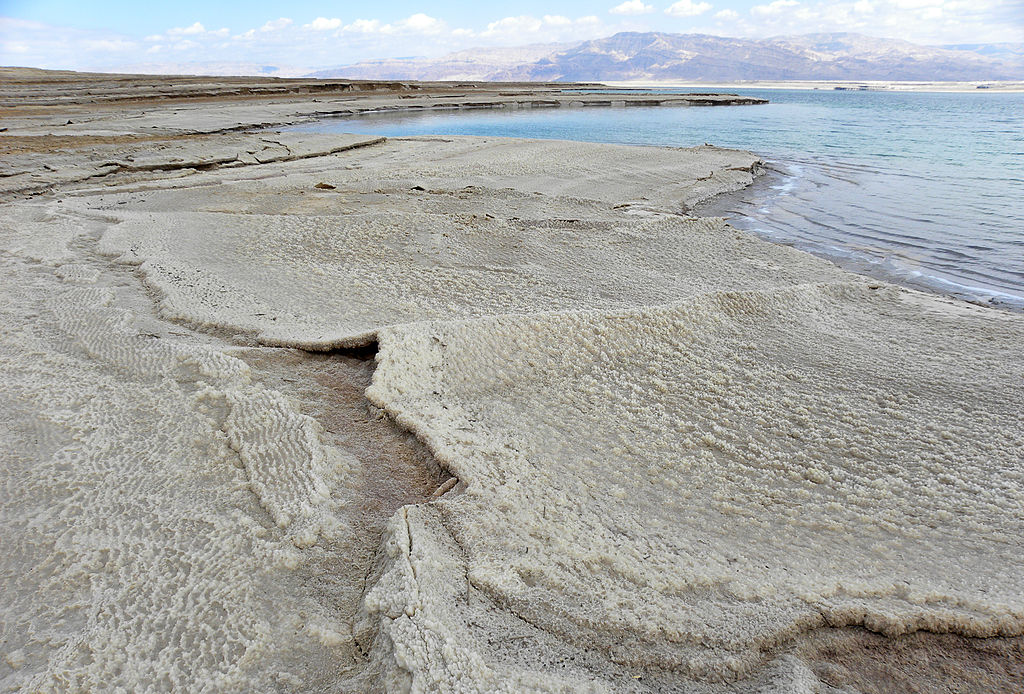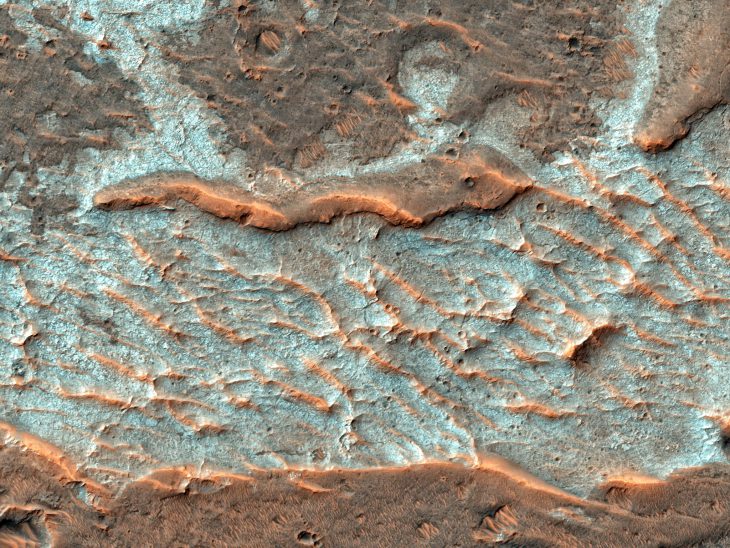Are we alone? In classic sci-fi, aliens are often portrayed in humanoid or insect-like forms. But single-celled microorganisms ruled the first 3 billion years of life on Earth. Chances are that any life outside our planet will also be microbial. Microbial life is much trickier to spot than little green men. So how do we find these tiny aliens?
If we stick to astrobiology’s popular mantra and “follow the water”, we don’t need to look far. Liquid water once existed on the surface of our planetary neighbor, Mars. Martian terrains from around 3 to 4 billion years ago have rocks and landscapes like those made by lakes and rivers on Earth. The NASA Curiosity rover has found organic carbon, the basis for all terrestrial life, in one ancient martian lakebed. This evidence implies that early Mars was a wet environment with all the necessary ingredients for life. Yet, no solid proof exists that past life actually took advantage of these habitable conditions.
Some scientists suggest we should be looking for signs of life in martian salts. Salt minerals are widespread on Mars. Martian salts include common table salt, which geologists call halite. Halite and other martian salt minerals formed from acidic, salty solutions, or brines. The same minerals form from acid brines on Earth, for example, in the Atacama desert in Chile.
Briny, acidic environments on our planet are teeming with microbial life. Brine dwellers include unique types of halophiles (salt lovers) and acidophiles (acid lovers). Salt crystals form rapidly in these brines and can trap their inhabitants in fluid inclusions, microscopic bubbles of liquid and gas. Similar fluid inclusions could be an ideal place to search for past life on Mars. But only if they have preserved their microbial captives over the last several billions of years.
Researchers from West Virginia University recently went in search of the oldest salty traces of life on Earth. They studied halite fluid inclusions in the 830-million-year-old Browne Formation from central Australia. Prior studies have found microbes in salts that formed as far back as 250 million years ago. Previous researchers dissolved large chunks of salt, which could introduce later microbial contamination. The WVU researchers instead observed the fluid inclusions in place using non-destructive microscopes. This approach allowed them to determine the origin of the fluid inclusions and prevented contamination.

Wilson44691, CC BY-SA 3.0, via Wikimedia Commons
The scientists first examined very thin wedges of halite under low magnification. They identified 2 different types of fluid inclusions. One type was about the width of a cotton fiber, cube-shaped, and lined up along growth bands of halite. They interpreted this type as primary fluid inclusions that formed at the same time as the halite crystals, 830 million years ago. A second type was larger, irregularly shaped, and cut across growth bands. They interpreted this type as secondary fluid inclusions that formed sometime later, so their age is uncertain.
Then, the scientists looked at the primary fluid inclusions under higher magnification. They discovered a wide variety of potential microbes and organics within them. Suspect microbes included well-defined spheres or rods that looked like bacteria. They also included larger, dimpled yellow spheres that resembled salt-loving algae.
The team also found ambiguous solid blobs in the fluid inclusions. Some blobs and putative microbes glowed faintly under ultraviolet-visible light. Organic molecules typically glow like this, confirming their biological origin. The rest could be organics that decayed, which would dampen how much they light up. A few halite crystals had an exceedingly high concentration of inhabited fluid inclusions. Up to 40% of these contained suspect microbes and organics.
The 830-million-year-old microbial fossils are an encouraging first step in testing whether ancient salts could preserve traces of past life on Mars. But a salty survival could offer a distinct advantage even to living cells in martian environments. Salt crystals concentrate moisture from the air and can shield organics from harmful radiation. Organic compounds provide important nutrient sources for microbes. Some fluid inclusions in the Browne Formation contain both organic matter and microbes.
Living microbes have previously been found in 250-million-year-old fluid inclusions, which offers the intriguing possibility that the trapped microbes could still be alive. Further culturing work is needed to test whether the 830-million-year-old zombie salt microbes can be revived.


